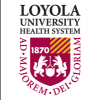(RxWiki News) Pain medications can be a double-edged sword. People in pain need help. Too much of a good thing, however, can cause addiction and endanger health.
New research from several major universities found that opioid addiction may be caused by both medical and nonmedical use. The authors of this new study also noted that overprescribing may be contributing to addiction in many patients.
To help solve the problem, these researchers recommended a variety of public health strategies.
Dr. Andrew Kolodny, of the Heller School for Social Policy and Management at Brandeis University, led this study. He and his colleagues reviewed many studies related to this issue.
"We need to prevent new cases of opioid addiction and we need to expand access to treatment for the millions of Americans who are already addicted," Dr. Kolodny said in a press release. "Without better access to addiction treatment, overdose deaths will remain high and heroin will keep flooding in.”
Megan Rech, PharmD, a pharmacist with the Level I Loyola Emergency Medical Services and Trauma Center in Chicago, told dailyRx News that more education on the risks of opioids could improve public health.
"Many patients know too little about the addiction risks, for example," she said. "Patients are also unaware that they can build up a tolerance to the medications. If they stop taking them for a while, the tolerance decreases. A patient can then restart the medication at the previous dose, which is now too high — causing an overdose."
Dr. Rech continued, "In the Loyola ER, we have a policy of only prescribing narcotics for seven to 10 days. This helps to decrease the risk that patients will use too much or take narcotics for longer periods."
Opioid pain medications include morphine and codeine. They also include oxycodone (brand names Roxicodone, Oxycontin, Oxecta) and hydrocodone (Lorcet, Vicodin, Norco, Lortab).
All of these medications are used in the treatment of acute and chronic pain. However, patients can become addicted to these medications.
Long-acting opioid medications became available in the 1980s, Dr. Kolodny and team noted. At the same time, organizations like the American Pain Society (APS) recognized that pain was undertreated.
The APS encouraged doctors to assess and treat both acute and chronic pain.
Dr. Kolodny and team found that, as the use of opioid painkillers has increased, so have their negative effects. These researchers also theorized that some patients may turn to heroin once they become addicted to opioids.
Heroin is a dangerous street drug that may be less expensive than prescription medications. Dealing with overprescribing and addiction might decrease the demand for heroin, Dr. Kolodny and team said.
Doctors have increasingly prescribed opioid pain relievers (OPRs) over the past 15 years, Dr. Kolodny and colleagues found. From 1999 to 2011, for instance, oxycodone consumption in the US increased by almost 500 percent.
During roughly the same period — 1997 to 2011 — the number of people seeking treatment for opioid addiction increased 900 percent.
Dr. Kolodny and colleagues believed this may be a public health issue and recommended public health strategies to deal with the problem. For instance, patients should be educated about the risks of OPRs.
Since some people will doctor-shop to obtain multiple prescriptions, the authors recommended increased use of prescription drug monitoring programs (PDMPs). A PDMP can show a doctor all of the prescriptions a patient has received from other sources.
The study was published in February in the Annual Review of Public Health.
No outside sources funded this research. Study author Dr. G. Caleb Alexander was chair of the FDA’s Peripheral and Central Nervous System Advisory Committee. He also served as a paid consultant to IMS Health and on an IMS Health advisory board.








